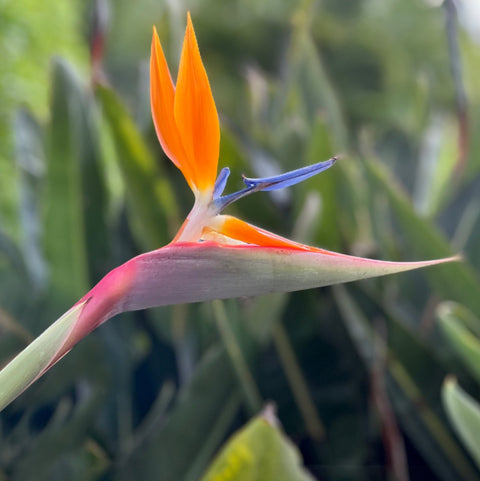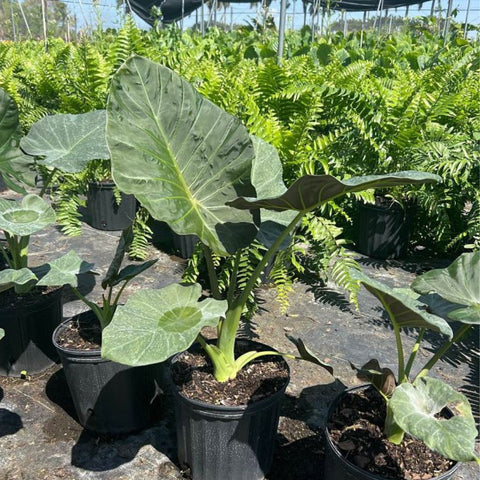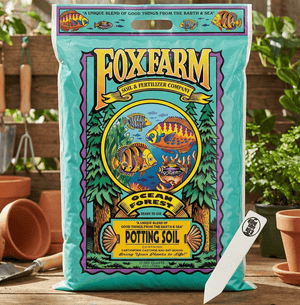Introduction
Hook
As the warmth of spring gently replaces the dormancy of winter, gardens around the world burst into life with vibrant colors, delightful fragrances, and the melodious symphony of nature. It's a time of renewal and growth, where every petal, leaf, and blade of grass seems to celebrate the season's arrival. For gardeners, spring represents a blank canvas, brimming with potential and promise.
Overview
Spring gardening is not just about planting seeds; it’s about crafting a living masterpiece that thrives with the changing seasons. This guide will walk you through essential spring gardening practices, from preparing your garden, choosing the right plants and trees, to effective maintenance and care techniques. Each section will equip you with the know-how to nurture a lush and productive garden.

Purpose
Spring is often hailed as the optimal time for gardening due to its perfect blend of warming temperatures and increasing daylight. The soil is just waking up, making it easier to work with, while the seasonal rains provide natural irrigation. Setting your garden up during this dynamic period increases your chances of a thriving and bountiful growing season.
Preparing Your Garden for Spring
A. Cleaning and Organizing
Before planting begins, it is crucial to prepare your garden space. Start by removing debris accumulated over the winter months, such as fallen branches, leaves, and old plant matter. This cleaning process is essential to prevent pests and diseases from lingering in your garden.
B. Soil Preparation
1. Testing and Amending Soil
Understanding your soil is fundamental. Perform a soil test to determine its pH and nutrient levels. Once you have this information, you can amend your soil with the necessary nutrients to ensure healthy plant growth. Incorporate organic matter like compost to boost soil fertility.
2. Tilling or Turning the Soil
Tilling the soil helps aerate it, promoting root growth and drainage. It breaks up compacted soil, making it easier for plants to establish themselves. If your soil is prone to erosion, consider no-till methods to maintain the soil structure.

C. Planning Your Layout
1. Space Considerations
Careful planning of plant placement based on sun exposure, mature height, and water needs can save you time and energy as the season progresses. Utilizing vertical space with trellises or hanging pots can add depth to a small garden.
2. Companion Planting
Maximize the efficiency of your garden by leveraging companion planting. Some plants enhance the growth of others when placed nearby, such as tomatoes and basil, which not only complement each other in flavor but also assist in pest control.
Selecting Plants and Trees for Spring
A. Choosing the Right Plants
1. Annuals vs. Perennials
Choose a mix of annuals and perennials to enjoy a dynamic and sustainable garden. Annuals, like Agapanthus 'Lily of the Nile Blue', will provide a burst of color throughout the season. In contrast, perennials return year after year, often growing fuller as each season passes.
2. Native Plants
Consider native plants as they are adapted to your local environment, requiring less water and maintenance. They also support local wildlife, making your garden a haven for beneficial insects and birds.
B. Trees for Your Garden
1. Ornamental Trees
Ornamental trees, such as Adonidia Palm Double and Alexander Palm, add focal points to your landscape with their striking forms and foliage. These trees are perfect for adding structure and beauty to your garden.

2. Fruit Trees
For those wanting a functional element, consider planting fruit trees. Not only do they provide shade, but they also offer a yearly harvest of fresh produce. Research which fruit trees thrive in your climate and require the appropriate care to ensure a fruitful yield.
Planting Techniques for Spring Success
A. Timing and Weather Considerations
Timing is everything in spring gardening. Wait until the last frost date has passed in your region before planting sensitive crops. Keep an eye on the weather forecast to protect young plants from unexpected cold snaps with row covers or cloches.
B. Proper Planting Procedures
1. Seed Planting
For seeds, refer to the packet instructions for depth and spacing. To promote even growth, consider soaking seeds overnight before planting, which can speed up germination.
2. Transplanting Seedlings
When transplanting seedlings, gently ease them out of their containers to avoid damaging the roots. Water them thoroughly before and after transplanting to reduce shock. Ensure gradual exposure to sunlight by hardening off seedlings over a week or two.
C. Irrigation Techniques
A well-planned irrigation system ensures your plants receive adequate moisture throughout the growing season. Drip irrigation systems deliver water directly to plant roots, reducing evaporation and water waste.

Spring Garden Maintenance
A. Watering and Feeding
1. Optimal Watering Schedules
Water early in the morning to reduce evaporation and fungal diseases. The frequency of watering depends on your local climate and plants' specific needs. Overwatering can be as harmful as underwatering, so monitor soil moisture levels regularly.
2. Fertilization Techniques
Use a balanced fertilizer to promote leaf, flower, and root development. Broadcast fertilizers evenly across garden beds and incorporate them into the soil at the recommended rate. Consider slow-release fertilizers for long-term nutrient availability.
B. Pest and Disease Management
1. Identifying Common Pests
Knowing the pests common to your plants helps in early detection and control. Companion plants like marigolds can act as natural deterrents, while resources like Agave Blue are noted for their resilience to pests.
2. Natural Pest Control Methods
Embrace biodiversity by encouraging beneficial insects like ladybugs and parasitic wasps. These predators naturally control pest populations. Homemade insecticidal soap solutions can also be effective in managing soft-bodied insects.

Creating a Sustainable Garden
A. Eco-Friendly Practices
1. Composting
Recycling kitchen scraps and yard waste into compost enriches your soil without resorting to chemical fertilizers. Composting not only reduces landfill waste but also improves soil structure and fertility.
2. Water Conservation
Incorporate rain barrels to collect water for garden use. Mulching also aids in water conservation by reducing evaporation and maintaining stable soil temperatures.
B. Wildlife Friendly Gardening
1. Planting for Pollinators
Ensure a variety of flowering plants that bloom throughout the growing season to provide nectar and pollen sources. Native plants are particularly attractive to local pollinators, enhancing biodiversity.
2. Bird and Insect Habitats
Incorporate birdhouses, bee hotels, and log piles to create habitats for various species. These structures offer shelter and nesting areas, promoting a balanced ecosystem within your garden.

Conclusion
Embracing the Spring Season
Spring is a magical time for gardeners, a season when the earth's energy is perceptible in every bud and sprout. By preparing, planting, and maintaining your garden thoughtfully, you can create a lush, thriving environment that rewards your efforts with beauty and bounty.
Invitation to Explore Plantology
As you embark on your spring gardening journey, consider the wide selection of plants and trees available at Plantology to enhance your garden spaces. Whether you are looking for resilient Agave varieties or elegant palms, Plantology is your partner in creating magnificent garden landscapes. Visit our website to explore our collection and let us help you turn your gardening vision into reality.
Looking Ahead to a Sustainable Future
In our efforts to cultivate beautiful and productive gardens, we must also consider the long-term implications of our gardening practices. A sustainable approach not only benefits our gardens but also contributes positively to the environment. As awareness grows about the impact of human activity on climate change, adopting sustainable gardening practices becomes vital. From soil health and biodiversity to resource conservation, there are various aspects to explore and implement in your gardening journey.

Advanced Soil Health Management
A. Understanding Soil Ecosystems
The foundation of any thriving garden is healthy soil. To maintain and enhance soil quality, it's important to understand the complex ecosystem that exists below your plants. Soil is teeming with life, including microorganisms, fungi, and insects, all of which play crucial roles in nutrient cycling and soil structure. By fostering a rich soil ecosystem, you promote plant health and reduce the need for chemical interventions.
1. Encouraging Microbial Activity
Microbes are the unsung heroes of soil health, breaking down organic matter to release nutrients that plants can use. You can support microbial activity by incorporating ample organic matter, such as leaf mold or well-aged compost, into your soil. Avoid using harsh chemical fertilizers and pesticides that can disrupt microbial communities.
2. Implementing Cover Crops
Cover crops, grown in between regular planting seasons, can protect and enrich your soil. They suppress weeds, prevent erosion, and add organic matter when tilled back into the soil. Leguminous cover crops, like clover or vetch, add nitrogen, a crucial nutrient for plant growth, enhancing soil fertility naturally.
B. Mulching for Healthy Soil
1. Organic Mulch Benefits
Mulching is a practice that offers numerous benefits for garden soil. It helps retain moisture, suppress weeds, and regulate soil temperature. As organic mulch decomposes, it also improves soil structure and nutrient content. Straw, bark chips, and shredded leaves make excellent mulching materials.

2. Techniques for Effective Mulching
To effectively mulch, apply a 2-3 inch layer of organic material around plants, ensuring that it's not touching the stems to prevent rot. Replenish mulch as needed to maintain adequate coverage. This simple step can significantly reduce soil erosion and improve plant health.
Innovative Watering Systems
A. Water Efficiency Principles
With increasing water scarcity due to climate change, water conservation in gardening practices becomes imperative. Efficient water use not only saves this precious resource but also reduces your water bill and minimizes plant stress. The key is to water plants deeply and infrequently, encouraging deep root growth and reducing evaporation.
1. Drip Irrigation Systems
Drip irrigation systems are an excellent choice for efficient watering. They deliver water directly to plant roots, minimizing evaporation and runoff. By utilizing timers and moisture sensors, you can further optimize water use. While the initial installation cost may be higher than traditional methods, the long-term savings and environmental benefits are significant.
2. Rainwater Harvesting
Harvesting rainwater is an eco-friendly way to supplement your garden's water supply. Install rain barrels beneath downspouts to collect runoff from rooftops. This stored water can be used for irrigation during dry spells. It's a simple yet effective way to make your garden more sustainable and less reliant on municipal water supplies.

B. Drought-Resilient Landscaping
1. Selecting Drought-Tolerant Plants
Choosing plants that can withstand dry conditions is a smart strategy for reducing water use. Many native plants are drought-tolerant, as are certain varieties of succulents and ornamental grasses. Investigate which hardy species are best suited to your climate and soil type.
2. Xeriscaping Techniques
Xeriscaping is the practice of landscaping with water conservation as the primary goal. It involves using drought-resistant plants, grouping plants with similar water needs, and incorporating elements like mulch and rocks to reduce evaporation. Implementing xeriscaping principles can transform your garden into a low-maintenance and water-efficient oasis.
Embracing Biodiversity
A. Polyculture Planting
1. Benefits of Plant Diversity
Planting a diverse range of species in your garden creates a resilient ecosystem. Diversity enhances the garden's ability to withstand pests and diseases, supports beneficial wildlife, and improves overall soil and plant health. Implement polyculture by mixing plants with different growth habits, root systems, and light requirements.
2. Specific Plant Combinations
Consider pairing plants known for pest deterrence and attractants for beneficial insects. For instance, interplanting marigolds with vegetables like tomatoes helps repel nematodes and aphids. Similarly, planting nectar-rich flowers like calendula among squash and cucumbers attracts pollinators.

B. Creating Habitats for Wildlife
1. Supporting Local Fauna
Your garden can become a refuge for local wildlife. By including native plants, water sources, and natural shelter, you provide essential resources for birds, butterflies, and beneficial insects. This approach not only enhances the aesthetic value of your garden but also promotes ecological balance.
2. Constructing Shelter Structures
Install birdhouses, bat boxes, and bee hotels to accommodate various species. These structures offer nesting sites and protection from predators. Choose materials that are safe and suitable for the intended inhabitants, and place these structures in positions that cater to their specific habitat preferences.
Gardening for Health and Well-Being
A. Connecting with Nature
1. Mental Health Benefits
Gardening offers profound mental health benefits, serving as a meditative and stress-reducing activity. The tactile sensations of handling soil, the rhythmic nature of planting, and the visual reward of vibrant blooms all contribute to a sense of peace and fulfillment.
2. Physical Health Benefits
Gardening is a form of low-impact exercise that enhances both strength and flexibility. Tasks such as digging, planting, and weeding engage various muscle groups and improve cardiovascular health. The physical activity involved in gardening can help maintain a healthy weight and improve overall fitness.

B. Growing Your Own Food
1. Nutritional Benefits
Growing your own produce ensures access to fresh, organic food. Vegetables and fruits harvested at their peak possess superior nutrient profiles and flavors compared to store-bought options. Include a variety of edibles in your garden to enjoy a balanced and nutritious diet.
2. Exploring Culinary Variety
Your garden can be a source of culinary inspiration. Planting unusual or heirloom varieties of vegetables offers the opportunity to explore different flavors and textures. This can expand your cooking repertoire and encourage healthy eating habits.
Inspiring the Next Generation of Gardeners
A. Educational Gardening for Children
1. Introducing Kids to Gardening
Getting children involved in gardening from a young age cultivates a lifelong appreciation for nature and stewardship for the environment. Start with simple, engaging activities, like planting sunflower seeds or growing a small herb garden in containers.
2. Lessons in Responsibility and Patience
Gardening teaches children valuable life skills such as responsibility, patience, and problem-solving. As they care for their plants, they learn the importance of regular maintenance and observation. This hands-on learning experience can be transformative, fostering curiosity and a sense of accomplishment.

B. Community Gardening Initiatives
1. Building Community Through Gardening
Community gardens provide a platform for individuals to come together, share resources, and cultivate food collectively. These initiatives enhance social cohesion, promote cultural exchange, and support local food systems. Joining a community garden allows you to learn from others and contribute to a common goal.
2. Inspiring Environmental Stewardship
Participating in community gardening fosters a sense of environmental responsibility. It demonstrates the impact of collective action on sustainability and encourages volunteers to take an active role in caring for their surroundings. These gardens can serve as hubs for education and advocacy, inspiring broader environmental consciousness.
Conclusion: Envision Your Green Space
Reflecting on Your Gardening Journey
The principles of spring gardening serve as a foundation for a journey of growth, learning, and creativity. Whether you're nurturing a small urban balcony garden or an expansive backyard landscape, the practices shared within this guide empower you to create a space that is not only productive and beautiful but also sustainable and enriching to your life and the environment.

Call to Action: Engage with Plantology
Beyond this guide, your journey as a gardener can be continually supported with tools, knowledge, and resources. Plantology provides diverse plants and expert guidance to enrich your gardening experience. By tapping into these resources,






























Comments (0)
There are no comments for this article. Be the first one to leave a message!